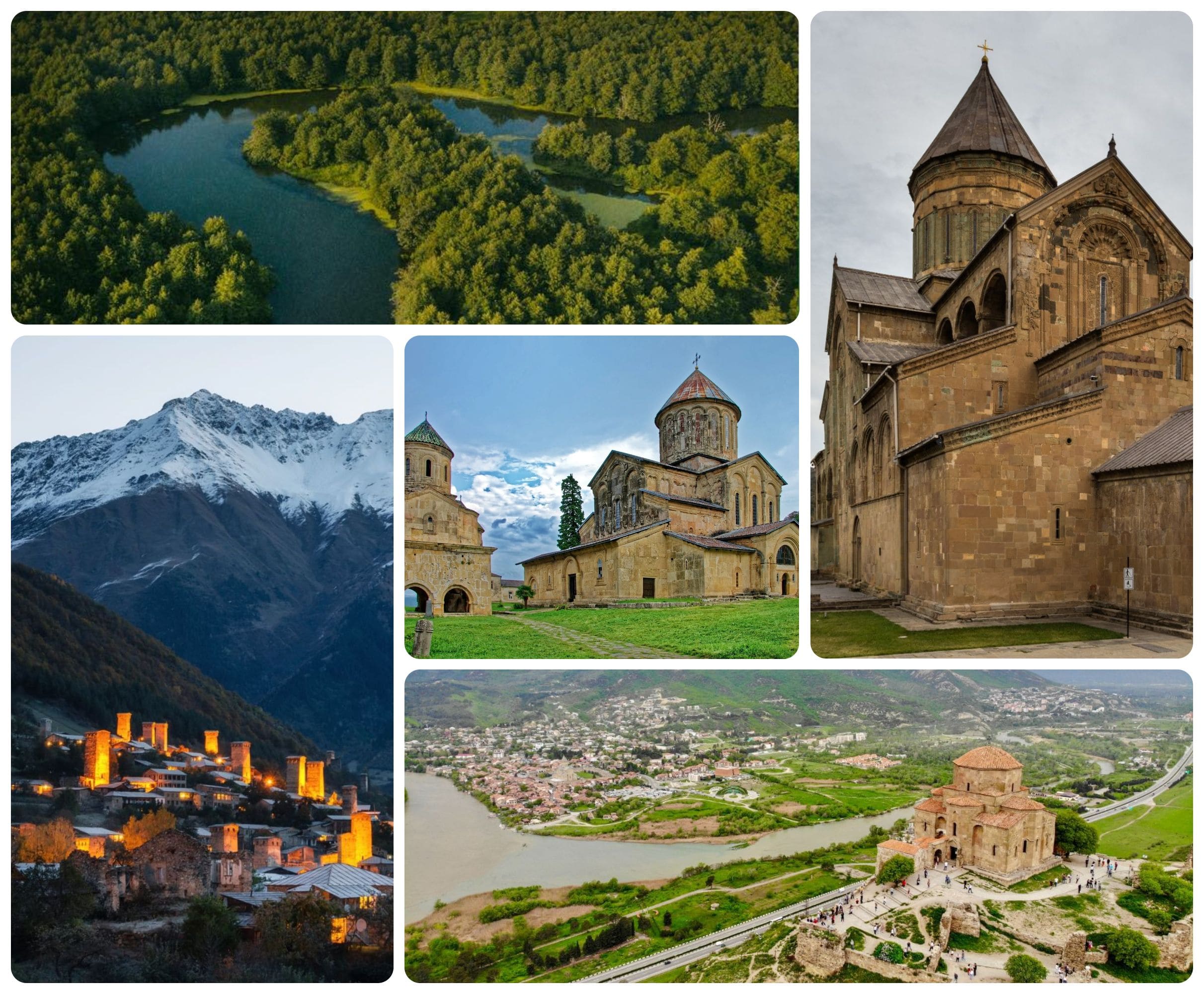Georgia, as is well known, is one of the world’s oldest countries. Throughout the centuries, it has preserved many natural and cultural sites that have retained their authenticity to this day. It’s no surprise that some of these monuments were eventually added to the UNESCO World Heritage List.
After receiving UNESCO membership on 07 October 1992, Georgia nominated several monuments for the World Heritage list. Currently, four Georgian sites have been designated as World Heritage sites. Georgia’s 14 monuments are on the tentative list and four elements are on the list of Intangible Cultural Heritage.
In 1994, the first monuments inscribed on the UNESCO World Heritage List were Gelati Monastery and the Historical Monument of Mtskheta. Upper Svaneti was designated a World Heritage Site two years later. These places are all examples of cultural heritage. Colchic Rainforests and Wetlands are the most recent addition to the list in 2021. It is first Georgia’s natural World Heritage site.
-
THE HISTORICAL MONUMENT OF MTSKHETA
The Historical Monument of Mtskheta includes the Svetitskhoveli Cathedral, the Jvari Monastery, and the Samtavro Monastery. Mtskheta is the ancient capital of Kartli and the main cultural and spiritual center of Georgia. It is located 20 kilometers from Tbilisi, near the confluence of the Aragvi and Mtkvari Rivers. Christianity was proclaimed here as the first official religion of Georgia in 337, making it one of Georgia’s most important historical sites.
Despite reconstructions over the centuries, all three Mtskheta monuments bear the history of medieval architecture. The Svetitskhoveli Cathedral, the Jvari Monastery, and the Samtavro Monastery have important archaeological remains that demonstrate not only the kingdom’s high cultural evolution but also its social, economic, and political growth.
-
GELATI MONASTERY
The Gelati Monastery in Kutaisi was founded at the pinnacle of the country’s medieval political and economic evolution, known as the Golden Age of Georgia (11th and 13th centuries). Built in 1106 by King David IV the Builder, the monastery was one of the largest medieval Orthodox monasteries with an Academy. Lavishly decorated with frescoes and mosaics from the 12th to the 17th centuries, it was the main center of education and science in ancient Georgia.
-
UPPER SVANETI
Upper Svaneti has retained its authenticity over the centuries due to its remote location on the mountain slopes between the Caucasus and Svaneti mountain ranges. It combines several small medieval villages with the region’s signature defensive Svan tower houses. Upper Svaneti also has an exceptional natural environment with alpine valleys, gorges, and snow-capped mountain peaks in the background. Ushguli settlement preserves more than 200 Svan towers, castles, and churches from the middle ages. The original Svan houses have two floors, whereas the towers have five.
At first, the open hall on the ground floor housed both humans and livestock until it was separated by a richly ornamented wooden barrier. The second floor served as summer lodging and storage for tools and fodder, while the towers served as a defense against intruders. This completely authentic interaction between Upper Svaneti humans and nature is something that should be preserved.
-
THE COLCHIC RAINFORESTS AND WETLANDS, GEORGIA
The Colchic Rainforests and Wetlands are Georgia’s first natural UNESCO World Heritage site. The Colchic Rainforests and Wetlands, located between the regions of Guria, Adjara, and Samegrelo-Zemo Svaneti, are made up of seven areas with diverse flora and fauna. The altitudes of the lands range from sea level to 2,500 meters above sea level. The temperature is warm with a greatly humid climate from the Black Sea. Several globally endangered and relict species can be found in the Colchic ecosystems. These lands are home to more than a thousand plant species. The site also protects approximately 20 threatened animal species, including the critically endangered Colchic Sturgeon.
INTANGIBLE CULTURAL HERITAGE OF GEORGIA
The list of Intangible Cultural Heritage of Humanity helps to raise awareness about the importance of the Intangible Heritage and shows its diversity around the world. Georgia currently has the following four elements on the list:
- Georgian polyphonic singing;
- The traditional Qvevri wine-making method from ancient Georgia;
- The three writing systems of the Georgian alphabet;
- Georgian wrestling called Chidaoba.
[/vc_column_text][/vc_column][/vc_row]


Comment (0)